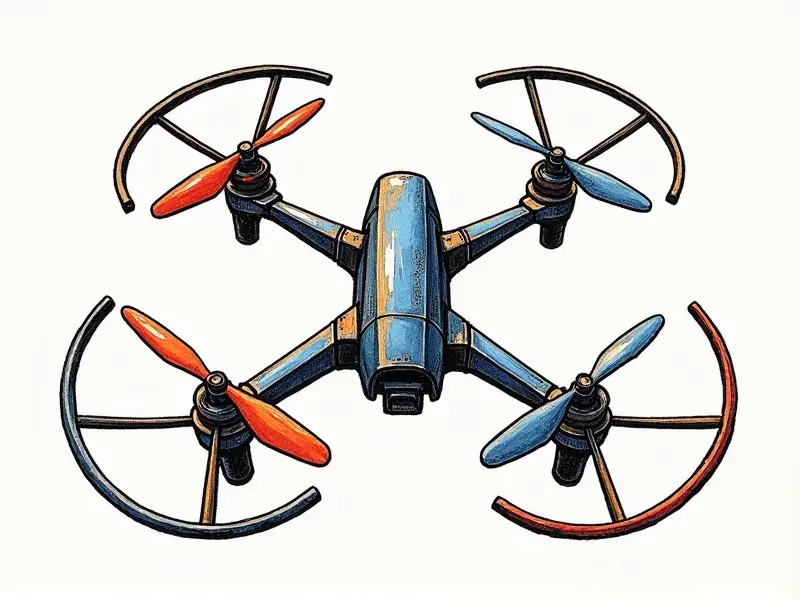Why do RC airplanes stall?

Understanding Why RC Airplanes Stall
RC airplane stalls are a common issue that can be both frustrating and dangerous for pilots. A stall occurs when the angle of attack (AOA) becomes too high, causing the wing to lose lift and the plane to descend rapidly. This phenomenon is not unique to full-scale aircraft; it affects RC planes as well. Understanding why RC airplanes stall is crucial for safe and effective flying.
Preventing RC Airplane Stalls Explained
To prevent stalls, pilots must maintain a balance between the angle of attack and airspeed. Proper control inputs are essential to keep the plane within its optimal flight envelope. By understanding how to manage these factors, you can significantly reduce the risk of stalling.
Common Causes of RC Plane Stalls
- Inadequate Airspeed: Flying at too low an airspeed is a primary cause of stalls. When the plane's speed drops below its stall speed, lift decreases dramatically.
- High Angle of Attack: Excessive pitch up or steep turns can increase the angle of attack to dangerous levels, leading to a stall.
- Poor Control Input: Sudden and aggressive control movements can disrupt airflow over the wing, causing premature stalling.
How to Recover from an RC Plane Stall
If your plane does stall, quick recovery is essential. The first step is to reduce the angle of attack by lowering the nose slightly. This action increases airspeed and helps restore lift. Avoid overcorrecting, as this can lead to further instability.
Beginner's Guide to Avoiding RC Plane Stalls
New pilots often struggle with stalls due to a lack of experience. Here are some tips for beginners:
- Familiarize Yourself with Stall Speeds: Know the stall speed of your specific plane and avoid flying at or below this speed.
- Practice Smooth Control Inputs: Gentle, smooth movements help maintain stable airflow over the wing, reducing the risk of stalling.
- Learn to Recognize Stall Indicators: Understanding the signs that a stall is imminent can give you time to correct your course before it happens.
Tips for Flying RC Planes Without Stalling
Avoiding stalls requires consistent practice and awareness. Here are some additional tips:
- Monitor Airspeed: Keep an eye on airspeed indicators to ensure you're flying within safe parameters.
- Use Proper Trim Settings: Adjust trim settings to maintain optimal flight conditions, reducing the likelihood of stalling.
- Practice Slow Flight: Learning how to fly at low speeds without stalling is a valuable skill that enhances overall flying proficiency.
RC Airplane Aerodynamics: The Key to No Stalls
Aerodynamic principles play a crucial role in preventing stalls. Understanding concepts like lift, drag, and angle of attack can help you maintain stable flight conditions:
- Lift Generation: Lift is created by the difference in air pressure above and below the wing. Maintaining proper AOA ensures efficient lift generation.
- Drag Management: Minimizing drag helps maintain higher speeds, which are less prone to stalling.
Mastering RC Airplane Flight Control Techniques
Mastery of flight control techniques is essential for preventing stalls. Effective use of ailerons, elevators, and rudder can help you manage the plane's attitude and maintain stable flight:
- Aileron Use: Properly using ailerons to bank and turn without overcontrolling helps prevent stalling.
- Elevator Control: Smooth, controlled elevator inputs are crucial for maintaining the correct angle of attack.
RC Pilot Guide: Understanding Stalls
A comprehensive understanding of stalls is vital for all RC pilots. This guide covers everything from recognizing stall symptoms to recovery techniques:
- Symptoms of a Stall: Recognizing the signs, such as reduced control response and increased descent rate.
- Recovery Techniques: Immediate steps to take when a stall occurs, including reducing pitch angle and increasing airspeed.
Fixing RC Airplane Stalls with Proper Techniques
Correct techniques are key to fixing stalls. Here’s how to address common issues:
- Adjust Control Surface Settings: Fine-tuning control surface settings can improve stability and reduce the risk of stalling.
- Practice Recovery Drills: Regularly practicing stall recovery drills enhances your ability to respond effectively in real-time situations.
Avoiding RC Airplane Stalls: Techniques & Tricks
Incorporating various techniques and tricks can help you avoid stalls altogether. Here are some advanced tips:
- Use of Flaps: Deploying flaps properly during takeoff and landing can improve lift at low speeds, reducing the risk of stalling.
- Weight Distribution: Proper weight distribution affects stability and stall characteristics. Ensure your plane is balanced for optimal performance.
Conclusion
Mastery over RC airplane stalls requires a combination of theoretical knowledge, practical experience, and consistent practice. By understanding the aerodynamics involved, mastering flight control techniques, and employing effective recovery methods, you can significantly enhance your flying skills and ensure safer flights. Remember, prevention is key—always aim to fly within safe parameters and be prepared for any situation that may arise.

